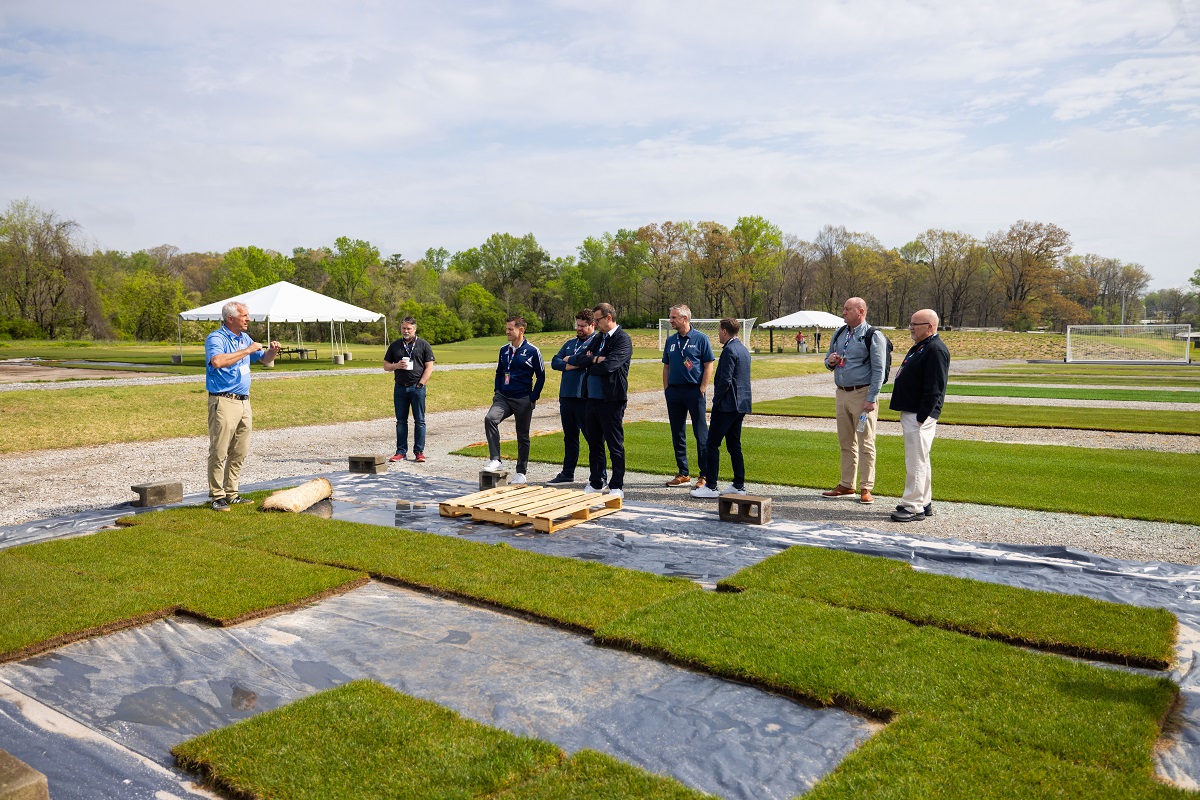
FIFA Has Partnered with University of Tennessee and Michigan State University to Produce the Best Possible Pitches for the Game-changing Tournament
A FIFA delegation visited the University of Tennessee (UT) in Knoxville, USA as part of the FIFA Pitch Research Field Day event to inspect the turf research & development (R&D) facility and meet with the teams who are working to create the perfect pitches for the FIFA World Cup 26™. The FIFA Research Field Day was the first official get-together of pitch managers from all 16 host city stadiums and training sites for the FIFA World Cup 26. Representatives from FIFA member associations, confederations, leagues, clubs, and industry suppliers were also present as over 200 turf specialists discussed the challenges and opportunities for the FIFA World Cup 26 R&D project. FIFA Chief Operating Officer World Cup, Heimo Schirgi was accompanied by Manolo Zubiria, FIFA Chief Tournament Officer – USA, Kaj Heyral, FIFA26 Director Infrastructure & Technical Services, Alan Ferguson, FIFA Senior Pitch Management Manager and Ewen Hodge, FIFA26 Senior Pitch Infrastructure Manager. Attendees were given the opportunity to inspect the pitch research facility at UT, hear from experts, and get an update on the status and learnings from the FIFA Research Project.
When host cities and venues for the FIFA World Cup 26 were announced in June 2022, FIFA’s Pitch Management Team implemented an innovative five-year research and development project to produce the perfect pitches for the tournament. FIFA partnered with UT and Michigan State University (MSU), two globally renowned research leaders who specialise in pitch management and player welfare, to deliver the largest ever sports turf research programme specifically for football/soccer. The two lead professors from the universities working on this R&D programme were involved in the pitch development programme for the last North American FIFA World Cup™ in 1994. “One of the easiest decisions I have made around this tournament so far was the partnering of Tennessee and Michigan State universities,” said Ferguson. “Both already had world-leading reputations, both already led by world-leading turf professors, I didn’t want to reinvent the wheel, it was already here.” …
A state-of-the-art shade house was constructed at UT to replicate conditions inside a domed stadium while MSU has a 23,000 sq ft asphalt pad installed on campus to replicate the concept of laying turf on stadium floors. Dr John Sorochan, Distinguished Professor of Turfgrass Science and Management at UT, explained that the R&D could lead to both environmental and cost benefits. “Sustainability is kind of a unique component to this,” said Sorochan. “The ability to produce a harvestable sod in as much as 16 to 20 weeks is paramount. We can do something really fast, and we can also cut down trucking costs, too. In theory, we can probably do this closer to urban areas and take up a large, vacated parking lot and actually grow the sod close to the stadiums, so you reduce transport costs as well.”
Dr John Rogers III, North American Turf Management Specialist from MSU, added: “If you can perfect this – which is what we are doing – you push turf grass science forward. You increase sustainability, you increase every part of the ability of the turf manager to be able to host multi-events in multi-use stadiums. It opens every avenue, and it’s the main reason that, for me, I got involved in this project.”
See complete article, video and more photos online at inside.fifa.com.